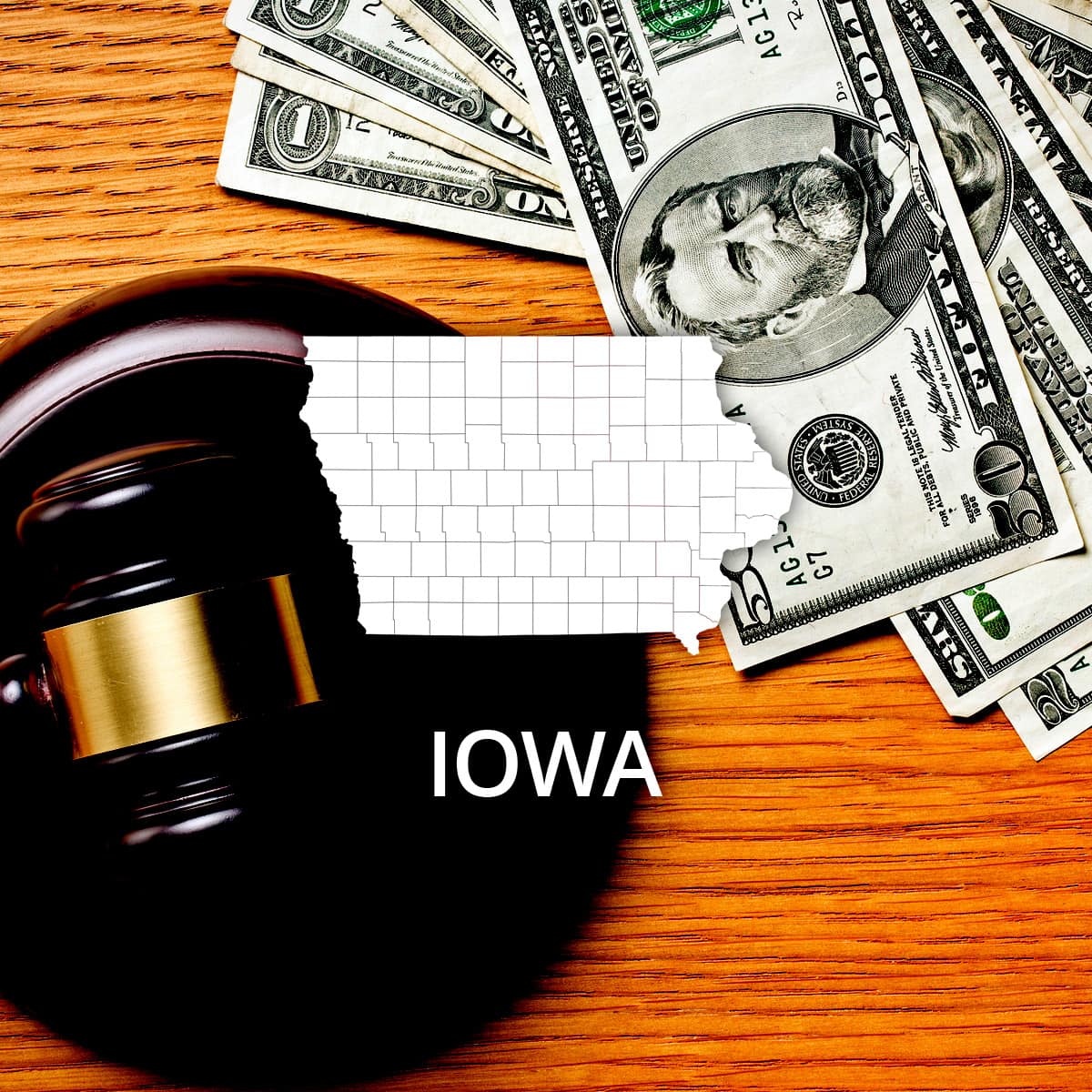How to File Bankruptcy in Iowa
 According to the 2005 Bankruptcy Act, all states must adhere to the same federal standards for
bankruptcy. The courts of Iowa are divided into two districts which are home to seven individual courts.
The types of bankruptcy which can be filed in these courts are Chapter 7, Chapter 11, Chapter 12, and
Chapter 13.
According to the 2005 Bankruptcy Act, all states must adhere to the same federal standards for
bankruptcy. The courts of Iowa are divided into two districts which are home to seven individual courts.
The types of bankruptcy which can be filed in these courts are Chapter 7, Chapter 11, Chapter 12, and
Chapter 13.
Types of Bankruptcy and Terms
Chapter 7 is often preferred by those who wish to eliminate most, if not all, of their unsecured debt. The code requires liquidation of non-exempt assets, so it is an attractive option for those with fewer belongings and limited income. Non-dischargeable debt such as child support and student loans will remain the responsibility of the debtor even with Chapter 7.
An alternative to Chapter 7 is Chapter 13. This type of bankruptcy allows a petitioner to keep their house and car as long as payments are made as agreed upon in court. A summary of repayment is submitted by the petitioner to the court with the goal of repaying debt in a period of 3 to 5 years. Chapter 13 is good for those who are in need of debt relief, but are able to reorganize their debt to make it more manageable.
Chapter 11 is another type of debt reorganization. This code calls for debt relief for business who wish to remain in operation but need time to pay off financial responsibilities. As with Chapter 13, Chapter 11 bankruptcies are typically finalized in 3 to 5 years. A similar but specific code, Chapter 12, was designed for family farmers and fishermen to protect their assets and have added time to repay debt.
Official bankruptcy forms for the U.S. Bankruptcy Courts are available at http://www.uscourts.gov/forms/bankruptcy-forms or RecordsFinder.com Court Forms Section.
Steps to Filing Bankruptcy
Credit counseling is required by all petitioners of bankruptcy according to the 2005 Bankruptcy Act. This must be completed within 6 months of filing. If a person receives credit counseling and determines bankruptcy is a desirable option, there are many more steps to follow.
The first step is to determine what type of bankruptcy for which a petitioner is eligible by conducting a Means Test. The Means Test compares the income of the individual over the last 6 months to the income of the state of Iowa. If the debtor's income is below the median, he or she may file for Chapter 7. Someone who earns more than the median income has the option of filing for Chapter 13.
Gathering paperwork for court documentation is the following step. These records include, but are not limited to: loan documents, tax records, monthly living expenses, a list of debts, an inventory of possessions, records for major financial transactions, deeds to property and titles for vehicles.
All of this documentation is added to the necessary forms to be filed for bankruptcy. A petitioner filing for Chapter 13 must also include a summary of repayment for court approval. These documents are put together in what is referred to as "the schedule" and submitted to the court. Some petitioners choose to have legal counsel during this time, while others choose to file on their own.
Immediately upon filing, an automatic stay is placed by the court so creditors can no longer contact the debtor and foreclosure proceedings are halted. A trustee is appointed by the court to gather the non-exempt items and liquidize them for repayment of debt. This trustee also arranges a 341 meeting for creditors and the debtor to negotiate terms for bankruptcy. If no agreement can be made, a judge will rule to set the terms for the petitioner.
Lastly, a petitioner must complete a financial management course for their bankruptcy to be finalized. Those who filed Chapter 13 are also expected to make payments as arranged by the repayment schedule.
Location Specific Information
Iowa District Courts are divided into a Northern and Southern District. Northern Bankruptcy Court locations are found in Cedar Rapids, Dubuque, Fort Dodge, and Mason City. The Southern Bankruptcy Courts are located in Council Bluffs, Davenport, and Des Moines.
